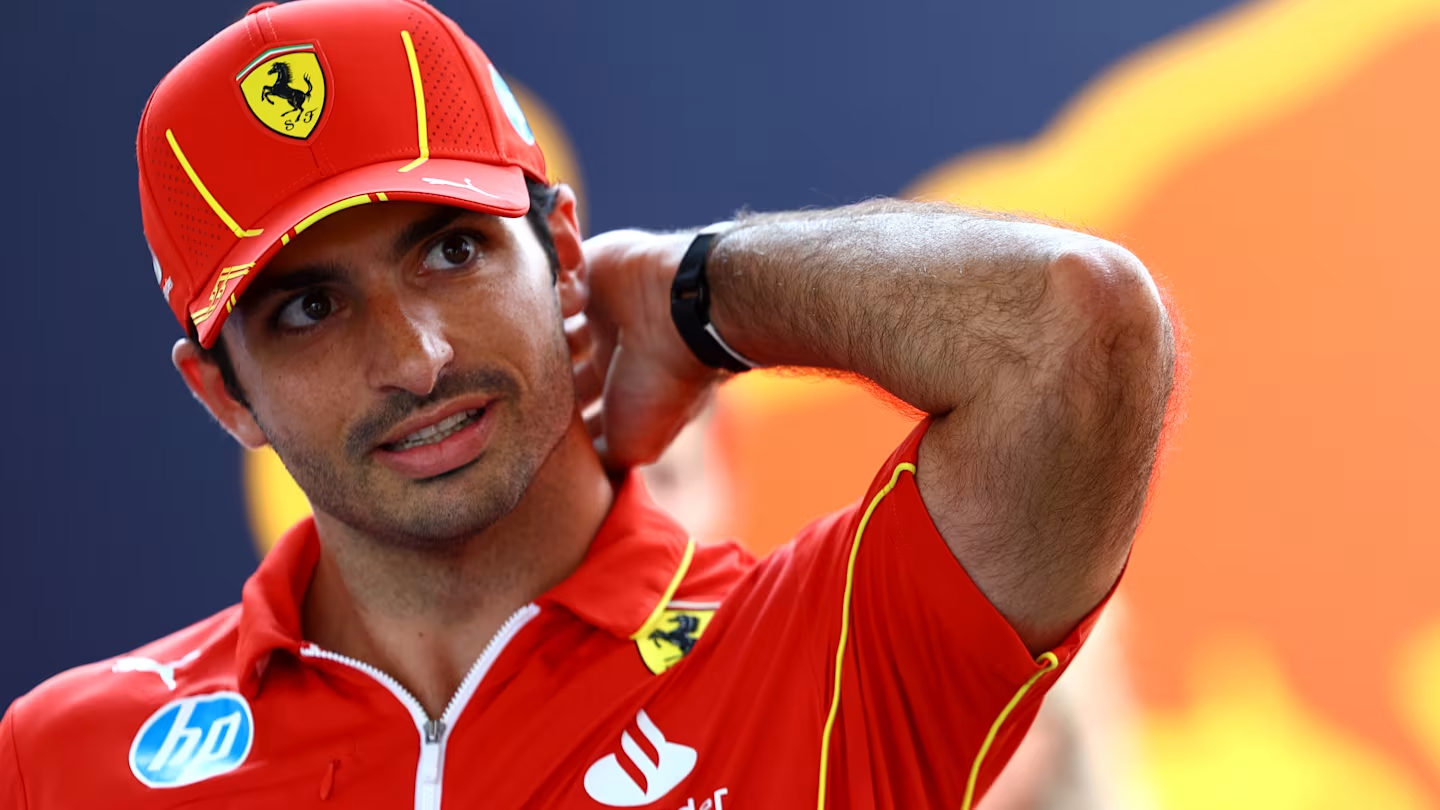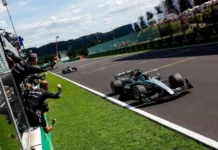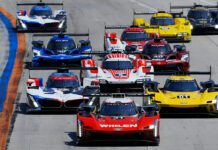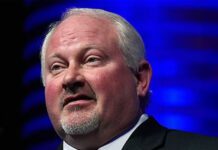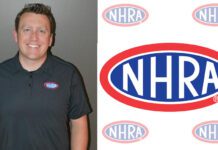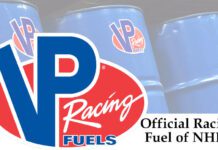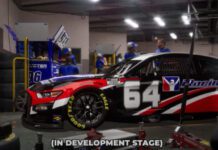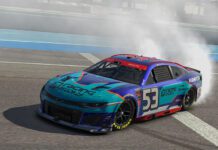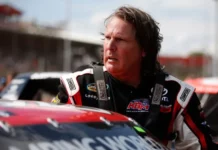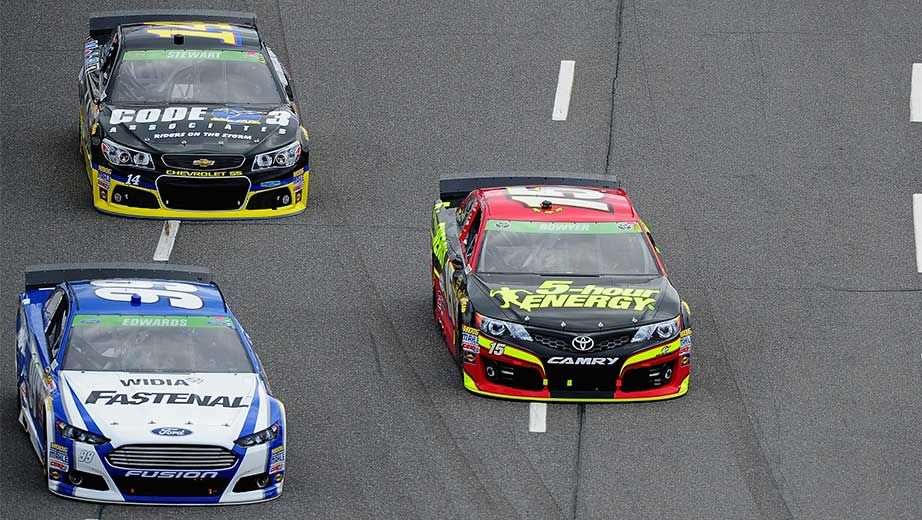Over the past two seasons, NASCAR has completely revamped the cars in its premier series in an effort to enhance the product on the race track. Next on the horizon appears to be a change to the engines.
NASCAR Chairman and CEO Brian France said Tuesday on SiriusXM NASCAR Radio that modifications to the engines — which would likely bring a reduction in horsepower — are the next step in further enhancing the sport’s on-track product, although he was unsure if such changes would be in place for next season.
“We’re going to make that happen, and that’s part of the overall rules packages that we design that hopefully control costs, hopefully make the racing better,” France said. “The engine is an integral part of that. We also have to be in step as much as possible with the car manufacturers and where they’re going with technology and different things. It all has to come together, and that’s the next significant part of the rules package. … The engine will get a significant change. I’m not going to say (for) ’15, but we are certainly sizing that up. It’s very important for us to get that right.”
According to representatives of NASCAR’s three manufacturer partners, who took part in a conference call with reporters Tuesday, a potential reduction in engine horsepower is still in the very early stages.
“With some clear objectives in mind, NASCAR is talking to their stakeholders, not only us as manufacturers but all of the engine builders that are party to this process,” said David Wilson, president and general manager of Toyota Racing Development. “So the process is correct, it’s healthy. We’re still talking along with NASCAR. We’re talking between ourselves about the various options, and it’s still in the consideration phase. I really don’t think we have much to say beyond that.”
Sprint Cup Series engines generate 850 horsepower, and are built by five manufacturer-specific companies — TRD and Triad Racing Technologies (Toyota), Roush-Yates Engines (Ford) and Earnhardt Childress Racing and Hendrick Motorsports (Chevrolet). Most of the changes made in recent years have focused on the cars, beginning with the rollout of the more brand-identifiable Generation-6 vehicle for the 2013 season, and an aerodynamic package that was further refined before this year.
All of those changes were made with manufacturers in step with NASCAR. Any engines changes would take the same approach, said Jim Campbell, U.S. vice president for Chevrolet performance vehicles and motorsports.
“The approach that we took on the development of the Gen‑6, we’re using a very collaborative approach between the manufacturers and NASCAR from the sanctioning body’s perspective on really discussing what are the options, what are the ideas, and in the end depending on where that ends up, it will impact how much work happens at the manufacturer versus the teams,” Campbell said. “The key is we keep the racing exciting, and then we make every resource we apply to the engines and the engine builds go as far possible. That’s really the key.”
Toward that end, NASCAR’s manufacturer partners certainly like what they see so far. Tweaks to the aerodynamic package accompanied changes to qualifying and the Chase for the NASCAR Sprint Cup, all of which have combined to stoke action on the track. The result has been six different winners in the first six events of this season — the longest such opening stretch without a repeat winner since 2003 — and all three manufacturers having visited Victory Lane at least once.
“I’ll tell you, here in the first six races, it’s been some of the most fantastic and spectacular racing that we have seen,” said Jamie Allison, director of Ford Racing.
It was a push from the manufacturers that ultimately led to the Gen-6 car, which more closely resembles its brethren in the showroom. “Each of us continues to reap the benefits” of that movement, Wilson said. So not surprisingly, the refinements made to the vehicle prior to this season once again started with manufacturer representatives, who met with NASCAR last year.
“We sat down with NASCAR and their technical group, and we agreed on the base objective, and that is how do we improve the quality of racing that we’re seeing on the race track? And from there, set about the very systematic process of testing,” Wilson said. “We worked with the race track twice. We were across the wind tunnel a couple times. And what came from that was a defined set of changes that we’ve been racing this year. As my two colleagues have already pointed out, we’re seeing some of the most exciting racing each and every weekend. So again, a great example of how we can achieve more by working together.”
An emphasis in that effort was enhancing competition at the 1.5-mile tracks that comprise the bulk of the Sprint Cup schedule. Toward that end, Sunday’s event at Texas Motor Speedway — the second 1.5-mile venue visited this season, after Las Vegas in March — offers another potential litmus test.
“I think actually we’re heading in the right area, and the racing has been quite good,” Campbell said. “But with only one race at that kind of category of a track, I think Texas will be another one to look at here and see how the racing is. … So far, so good, but we only have one under our belt, and Texas will be the next.”
On SiriusXM, France said the Sprint Cup intermediate package is “probably 40 percent of where we want to be. We’ve made some gains. Part of it is making the car easier to drive, better to drive. That’s part of it. But we’re not, candidly, where we’re going to be in a year or two.”
France said he is pleased with the sport’s direction, and says the goal of all the recent changes within the sport — from the car, to the qualifying and championship formats, and now likely the engine — are to build in long-term stability.
“The direction that we’re going allows us not to have to make any significant chances in the future,” France said on SiriusXM. “We know exactly what we’re trying to do with the rules package. We think the (Chase) format is something we can build on for the next 10 or 15 years, or longer. We don’t want to change things just because we feel like it. It’s always difficult …. So I love the general direction we’re at. We’re past the majority of the changes, and now we can build on where we’re at.”




